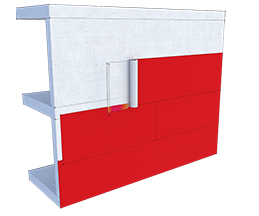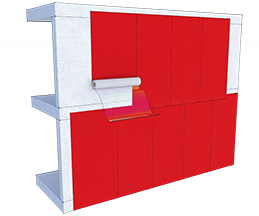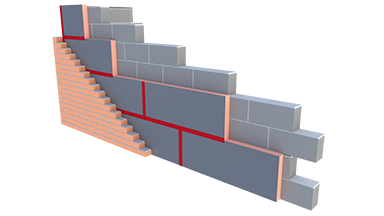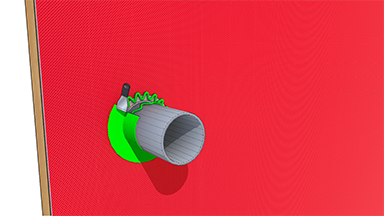Our Solution: One way to address this issue is to install Wraptite, which is a self-adhering solution that provides airtightness, vapour permeability and water resistance to the building envelope quickly. One of its key benefits is that Wraptite is installed externally which saves on material and labour costs due to its fast installation and simple detailing method compared to internal air barriers. Providing exterior protection to your project earlier in the construction process means work on the inside can also begin sooner. Wraptite Membrane and the range of Wraptite Accessories are robust materials that will permanently adhere to almost any substrate. This makes Wraptite a flexible and simple solution for achieving airtightness on both on-site and off-site projects.
Below is a step-by-step guide to installing Wraptite

1. Wraptite Membrane can be installed horizontally – 2-person method or vertically – 1-person method

a) Pre-cut the membrane to the required length then reroll with the release paper facing outwards.
b) Starting in a corner and using a chalk line for guidance, peel back the release paper and lightly apply the adhesive surface to the prepared substrate.
c) Using a hand roller or stiff brush smooth out any air bubbles, releasing the air by starting from the middle and working your way towards the edges.
2. Wraptite Tape, Corners and Liquid Flashing are effective for sealing gaps between rigid insulation panels, and detailing around penetrations, windows and doors.

a) Tape should be pre-cut before removing the release liner and the adhesive side handled as little as possible. Split Liner options are available for Wraptite Tape to make this easier.

b) Fill gaps around door and window frames with Wraptite Liquid Flashing and allow to cure, then finish with Wraptite Corners and Tape.

c) Gaps around wall penetrations that are greater than 6mm are prefilled with Wraptite Liquid Flashing and allowed to cure, then, after the Wraptite Membrane has been installed, a second layer of Liquid Flashing is applied to seal between the membrane and the penetration.
*The guidance provided here has been summarised. Please consult the A. Proctor Group website for complete installation advice.
